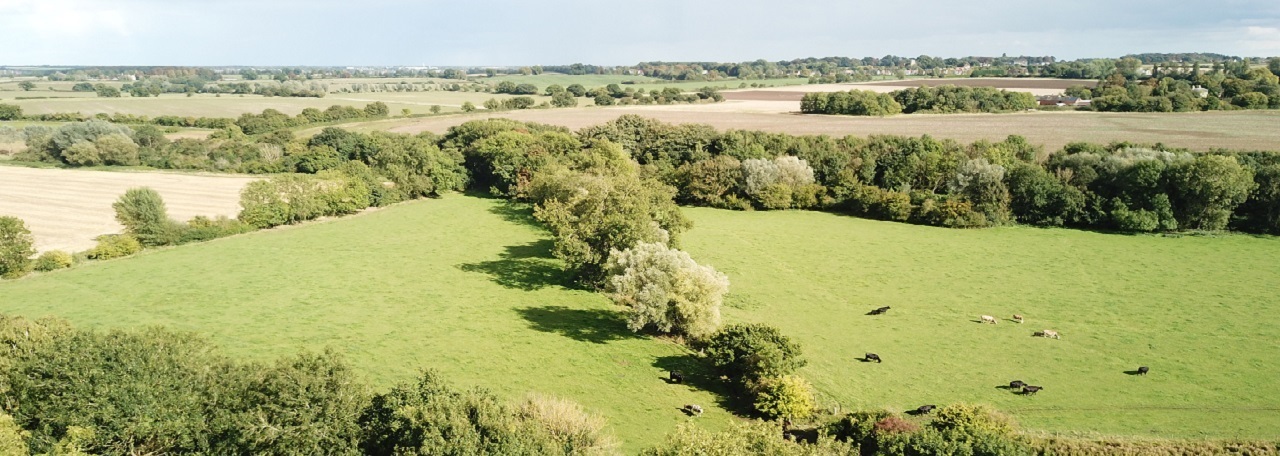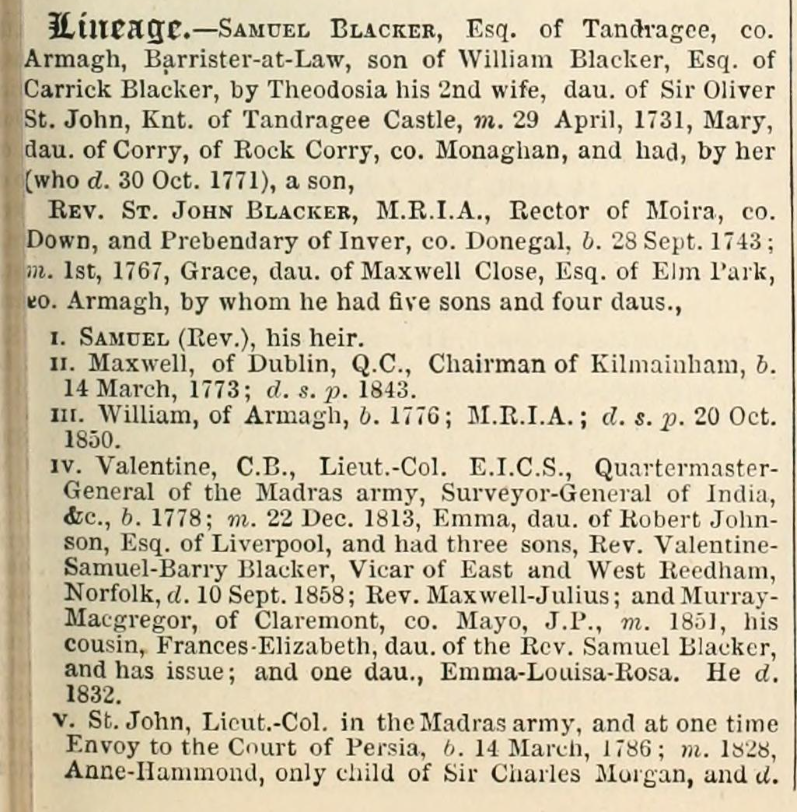Parish Records- a source of historical information
One of the important sources of historical information are Parish Records. Unfortunately these have often been
lost and if they exist they are held in a private archive.
The author of this website was handed a treasure-trove of documents that were previously stored in the vestry of St. Mary's
Church. It is presumed that these were intended to be made avilable to those were interested.
The documents that I have in my possession have been scanned and uploaded to this website.
I have reproduced and taken sections of these scan and incorporated them on the relevant pages of this website. Where
I am making a direct quote I am using my normal formating for quotes. The text in green boxes
is NOT that of the author of tempusfugit.me.uk.
I have added links in the green boxes and in other parts of pages where I have added my own text. I have also
reformatted some of the quoted text for readability.
Peter B Rushbrook
Peter's research and artwork is reproduced on my heraldry page
Top
Belchamp Hall - from a scan of a document 1960's
The text was presumably written by the then "head" of the household, the father of the current custodian.
Michael Raymond. The text in green is quoted from the scan of the PDF, additional notes and links added for
background.
This description of Belchamp Hall is contemporary with the 1965 Church Guide written by Micheal Raymond's father Samuel Philip Raymond, but this document is not dated.
Unlike any of the other accounts of Belchamp Hall, including the descriptions on the Hall's website and the Historic England site, there is no mention of the East India Company and or Valentine Blacker.
"
Belchamp Hall was built by the third John Raymond in 1720 and is lived in now by his direct
descendants.
It is a Queen Anne period house of rich red brick with a front nine bays wide and of two storeys, below a cornice
and solid parapet. The attic rooms have dormer windows, three to the front and one each to the other three sides.
Pilaster strips alternating with downpipes bearing the family crest break up the facade vertically.
The windows have emphasised keystones and neat apron pieces below the sills. The central bay has a little pediment
and narrower pilasters confined to the upper storey.
On the first floor, bay windows forming powdering chambers have been added to the two principal bedrooms on the north
and south of the house. This was done in Georgian times when hair powdering and wigs were the fashion.
The dressings are all of a red brick said to be Dutch and the walling is of cream-coloured stock.
The house, which faces south-east, looks down to the 14th century brick and flint parish church of
St. Mary with its famous mediaeval wall paintings. The view extends across the valley of the Belchamp Brook
(which runs into the River Stour) to the village of Bulmer.
"

William Harris and the Armada
"
The front porch leads into the central hall, hung with family portraits and from which an elegant staircase leads to the upper rooms. To the right is the dining-room. This was originally two rooms and is panelled with oak and chestnut thought to have come from the original Elizabethan house which, it is believed, was pulled down when the present house was built.
Family portraits by well-known artists hang on the walls.
One by Cornelius Janssen depicts the first John Raymond who bought the house and estate from Sir John Wentworth in 1611. Elizabethan portraits of
Sir William and Lady Harris, whose daughter Frances married Oliver Raymond, M.P. for Essex in the two Protectorate parliaments, hang each side of the door.
Sir William commanded a ship in the battle against the Spanish Armada and relics which he captured then, including an iron Treasure Chest with its original huge key, are still in the house.
"
Family Portraits
"
The beautiful drawing-room, the other side of the hall, has white panelling and is hung with charming family portraits
and 18th Century mirrors. The marble fireplace and iron fire basket are identical to those in the dining-room opposite.
Leading out of the drawing-room is the smoking room, the principal feature of whch is the 17th Century chamber organ,
given by Handel to the owner's great-great-great aunt, Lady Dundonald, who in her youth was one of his pupils.
Her portrait, by Gainsborough, in now in America.
"
Isabella Dundonald is interrred in the family vault having died in 1808.
Archibald Cochrane, 9th Earl of Dundonald survived her and remarried for a third time.
Library
"
Next door the Library with its old leather books contains a French marble statue of Diana and Actaeon, sent by
King Louis XVI to Tippu Sahib, Sultan of Mysore. It was captured in 1799 by another ancester,
Colonel Valentine Blacker, after the Siege of Seringapatam in South India, where Tippu met his death.
Panels of armorial glass recording various family marriages have been inserted in most of the downstairs windows.
The earliest dates from the end of the 17th century, while the latest is of the present owner's parents.
"
The estate was purchased by the Raymonds in 1611 from Wentworth. St. Clere was disiherited. Anne, his sister
either married Charles Dister (or John Lawrence 1st and John Eden 2nd,
according to the Alan Freer tree)
The grounds
The grounds of the hall on Historic England.
"
Outside, large lawns border the central drive with its circular sweep round an old sundial in front of the house.
To the right is a long raised terrace walk, originally planted with an avenue of Scots Firs (to be seen in the portrait of the owner's grandfather in the hall). These have now been replaced with smaller cherry trees. The terrace leads on the south to a small early Victorian summer house with a formal marble floor and windows made of early coloured glass depicting pastoral scenes, flowers and vegetables. Nearby the old dry pond is being converted to a sunken garden.
At the other end of the terrace, an old ruined folly stands on a mound which is now being replanted.
A great copper beech, one of the largest in the county, stands to the right of the front gates. Other trees include a
big Wellingtonia, cedars, Scots firs, cherries, cornus, liriodendron, yew, eucryphia, ginkgo, walnut, oaks, birches, etc.
A clipped yew hedge divides the front garden from the less formal gardens on the south side of the house. Here there is a wide stone terrace with tables and chairs for sitting out, and herbaceous borders containing a variety of plants, roses, shrubs and small trees. There are also climbing roses and other climbing plants, a magnolia grandiflora and
a very old mulberry tree which still produces a big crop of fruit every year.
A second yew-bordered enclosure shields a small swimming pool, and here again there are borders, roses, climbing plants and big Nevada roses backing a statue of Pan.
At the back of the stable block and coach houses is a large walled kitchen garden which has a long central pond and fruit trees trained on the walls.
The house is open by appointment on Tuesday and Thursday afternoons and some Bank Holidays. Please apply to
Mr. and Mrs. Michael Raymond, Belchamp Hall, Belchamp Walter, Sudbury, Suffolk C010 7AT. Telephone Sudbury (0787) 72744.
Reduced rates for Parties.
"
Tipu Sultan - Tippu Sahib, Sultan of Mysore
"
Tipu Sultan (born Sultan Fateh Ali Sahab Tipu,[5] 1 December 1751 – 4 May 1799),[1][6] also known as the Tiger of
Mysore,[7] was the ruler of the Kingdom of Mysore based in South India. He was a pioneer of rocket artillery.
He introduced a number of administrative innovations during his rule, including a new coinage system and calendar,[11]
and a new land revenue system, which initiated the growth of the Mysore silk industry.[12] He expanded the iron-cased
Mysorean rockets and commissioned the military manual Fathul Mujahidin. He deployed the rockets against advances of
British forces and their allies during the Anglo-Mysore Wars, including the Battle of x and Siege of Srirangapatna.
"
The relationship with the East India Comany.
"
Tipu remained an implacable enemy of the British East India Company, sparking conflict with his attack on
British-allied Travancore in 1789. In the Third Anglo-Mysore War, he was forced into the Treaty of Seringapatam, losing a number of previously conquered territories, including Malabar and Mangalore. He sent emissaries to foreign states, including the Ottoman Empire, Afghanistan, and France, in an attempt to rally opposition to the British.
"
Siege of Seringapatam - 1799
Below is a dump from Wikipedia:
"
The siege of Seringapatam (5 April – 4 May 1799) was the final confrontation of the Fourth Anglo-Mysore War between
the British East India Company and the Kingdom of Mysore. The British, with the allied Nizam Ali Khan, 2nd Nizam of
Hyderabad and Marathas, achieved a decisive victory after breaching the walls of the fortress at Seringapatam and
storming the citadel. The leader of the British troops was Major General David Baird, among the lesser known allies
were the Portuguese in Goa and Damaon.[1] Tipu Sultan, the de facto ruler after the death of his father, who had
usurped the throne of Mysore, was killed in the action.[2] The British restored the Wodeyar dynasty back to power
after the victory through a treaty of subsidiary alliance, Krishnaraja Wodeyar III was crowned the King of Mysore. However, they retained indirect control (British paramountcy) of the kingdom's external affairs.
"
Valentine Blacker
Valentine Blacker is referred to as "another ancestor" in Michael's description of the Hall. This is through his father, Samuel Phillip's marriage to Caroline-Mabel-Astell in 1914.
According to Wikipedia:
"
Valentine Blacker CB (19 October 1778 – 4 February 1826), was a lieutenant colonel in
the Honourable East India Company and later Surveyor General of India.
"
Valentine would have been 21 when the Siege of Seringapatam took place.
"
Blacker was born in Armagh, Northern Ireland where his family has an ancestral home in the barony of Oneilland East. He obtained a commission in the Madras Cavalry in 1798, was made a cornet in 1799, and aide-de-camp to a Colonel Stevenson in the Wayanad district in 1800, and quartermaster-general in 1810. He served in Deccan, 1817, and was promoted to lieutenant colonel. His son, Maxwell, was born in June 1822.
"
It should be noted that the Manor of Belchamp Walter was not owned by the Raymond family in 1799.
The Historic Englnad website says that Rev John Mayne St Clere Raymond, who in c 1865 recovered the lordship of the manor.
CB Order of Bath
"
The Most Honourable Order of the Bath[2] is a British order of chivalry founded by King George I on 18 May 1725.[3] Recipients of the Order are usually senior military officers or senior civil servants, and the monarch awards it on the advice of His Majesty's Government.[4][5] The name derives from an elaborate medieval ceremony for preparing a candidate to receive his knighthood, of which ritual bathing (as a symbol of purification) was an element. While not all knights went through such an elaborate ceremony, knights so created were known as "knights of the Bath"
"

